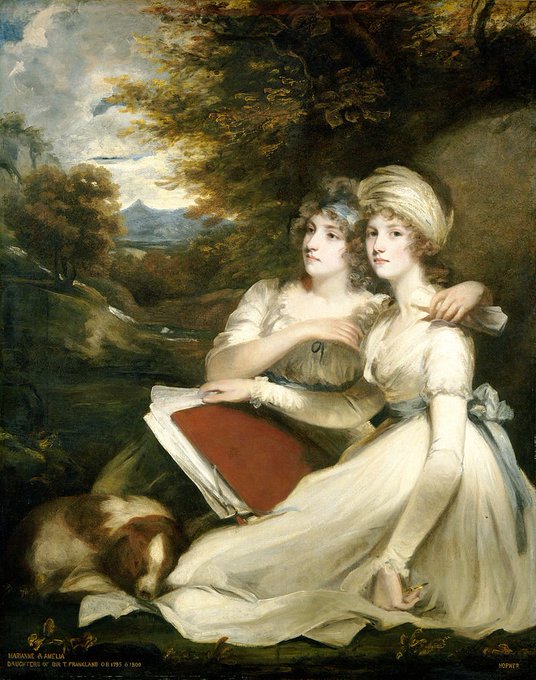FashionhistoryのTwitterイラスト検索結果。 196 件中 6ページ目
Stylish gentleman: Esp. like the six-pointed stars repeated on the buttons of both waistcoat & coat - plus extra love for that carnelian pinkie ring. "Portrait of an English Architect" unsigned, 18thc English School @JohnMoranInc #fashionhistory
Smoking Jacket https://t.co/PGF65FFBxB #metmuseum #fashionhistory
Today’s #cotd is a fancy dress costume from 1820. It’s an interesting regency interpretation of the renaissance, made of satin, glaze and silver trimmings. @KerryTaylorAuct #fridayfrills #fashionhistory.
In honor of my job @FieldofFirsts, today's #cotd is all to do with airplanes! There are three fashion illustrations and one excellently executed example of how aviation has been the inspiration for fancy dress since its beginning. #FashionHistory
Today's #cotd is Miss. Stevenson dressed as "Photography" to a fancy dress ball in Montreal in 1865. She took the idea from a fashion plate (like those pictured) Also, note that she is showing her ankles, something quite scandalous at the time. #FashionHistory
Portrait of the Frankland sisters by John Hoppner gives an idea of the styles of 1795. Hoppner achieved fame as a brilliant colorist and first exhibited at the Royal Academy in 1780. #arthistory #fashionhistory
#Hoppner
Eyes by Erté. Born Romain de Tirtoff in St. Petersburg in 1892, he began drawing costumes aged 5. Erté moved to Paris to work (very successfully) as a fashion illustrator & costume designer. His #ArtDeco style became popular again in the #1960s. He died in 1990.
#fashionhistory
The wild hairstyles of 1839! Note the “mechanical” brushes meant to deliver cleansing products for men’s beards w/out sullying one’s hands. Les Cent-Un Coiffeurs de Tous les Pas. #fashion #fashionhistory #fashionplates #hairdressing #hair #beards #barbers #fitnyc #designarchives
It’s a great day for a classic ‘70s sci-fi film! Such spectacular costumes designed by Bill Thomas for Logan’s Run. I love the acidy green, pink, and red color palette. I can never get enough of the Grecian as futuristic aesthetic of early science fiction movies! #fashionhistory
The Genoese Noblewoman (1625-1627) by Anthony Van Dyck reflects dress trends of the early 17th century, particularly in Genoa, such as rich silks ornamented with metallic lace, starched ruffs and the deep "V" shaped bodice.
#fashionhistory #arthistory
https://t.co/snwkFjZNjy
Puce: a colour favored by Marie Antoinette & popular in the late 18thc/ early 19thc. Puce is French for flea; the colour is described as resembling congealed blood or a flea after it’s been crushed on white linen— a familiar shade in its heyday. #FolkloreWords #fashionhistory
Wedding dress by Mme. Fréderique #fashionhistory #metmuseum
A charming little illustration by A. E. Marty found at the bottom of a page of the January 1920 issue of Gazette du bon ton. #fashion #fashionhistory #aemarty #gazettedubonton #1920 #fitnyc #fitspecialcollections #fashioninstituteoftechnology #designarchives
Dress by Elsa Schiaparelli, Fall 1951, sketch from the Bergdorf Goodman custom salon sketches. #fashion #fashionhistory #elsaschiaparelli #schiaparelli #bergdorfgoodman #1951 #50sfashion #fitnyc #fitspecialcollections #fashioninsituteoftechnology #designarchives










































